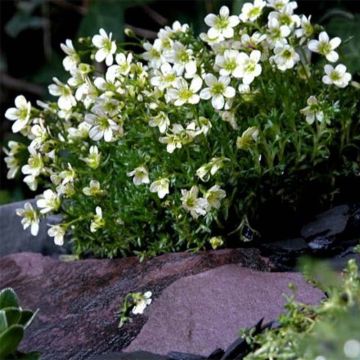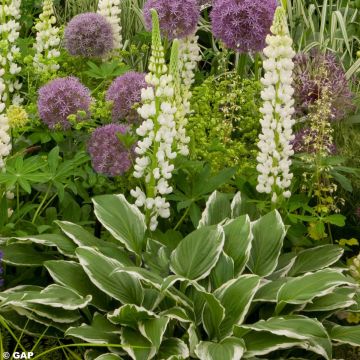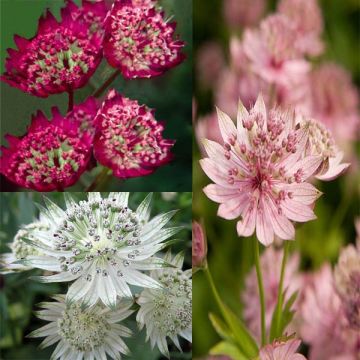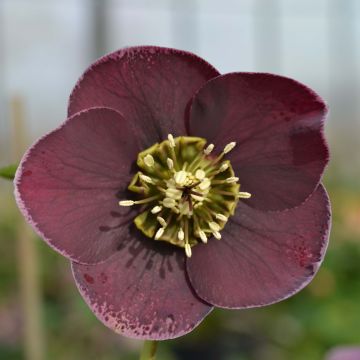

Nephrolepis cordifolia Arctic Jungle - Fougère de Boston rustique
Nephrolepis cordifolia Artic Jungle - Boston Fern
Nephrolepis cordifolia Artic Jungle
Sword Fern, Boston Fern
Planted last year in a town garden in Brittany, not only has the young plant thrived under the cover of a hedge, it has not lost its leaves in winter, has not suffered from the summer droughts of the past 2 summers, but also this year many tillers are establishing themselves around it.
A., 10/11/2023
This item cannot be shipped to the selected country
Delivery charge from €5.90
More information
Schedule delivery date,
and select date in basket
This plant carries a 12 months recovery warranty
More information
We guarantee the quality of our plants for a full growing cycle, and will replace at our expense any plant that fails to recover under normal climatic and planting conditions.
From €5.90 for pickup delivery and €6.90 for home delivery
Express home delivery from €8.90.

Does this plant fit my garden?
Set up your Plantfit profile →
Description
Nephrolepis cordifolia Artic Jungle is the hardiest among this genus of ferns, much hardier than the usual Boston fern, Nephrolepis exalta, which decorates interiors so beautifully. This Arctic Jungle selection is also more decorative, with numerous finely cut upright, very vibrant green fronds, giving it a light and luxuriant appearance. The plant spreads through stolons, eventually forming an excellent ground cover. Planted outdoors in a protected area like a shaded patio or a small city garden, it loses its leaves in winter but regrows from the crown in spring. Indoors or in a conservatory, its beautiful foliage will stay all winter.
Nephrolepis cordifolia Artic Jungle belongs to the Dryopteridaceae or Nephrolepidaceae family according to classifications. The botanical species Nephrolepis cordata is a fast-growing perennial fern with trailing rhizomes. The rhizomes produce small underground kidney-shaped bulbs that are reserve organs. This characteristic is the origin of the name Nephrolepis: in Greek, nephros means kidney, and lepis means scale. These small tubers are true 'survival kits', allowing this Boston fern to withstand the cold better, down to -8°C (17.6°F), and regrow in spring if the crown is protected by mulching. The cultivar 'Jungle Arctic' forms a dense, upright clump about 50cm (20in) high, which spreads without theoretical limits. Its light and vibrant green fronds, about 50cm (20in) long on an adult plant, are divided into leaflets arranged in two perfect rows. The plant will recover after a cold winter. The foliage burns as soon as it freezes.
Nephrolepis cordifolia Artic Jungle is very ornamental and easy to grow, suitable for outdoor and indoor cultivation. It dislikes wind, and appreciates filtered light and light, well-drained soil, always slightly moist. It can be planted in a sheltered garden or a container. It also makes a beautiful conservatory plant. Choose a shaded corner of a wall, the cover of a tree, the base of an evergreen hedge (not too dry), or the base of a low wall to plant it. This fern will be superb in a shaded patio or courtyard. Consider the holly fern, Cyrtomium fortunei, Corydalis, or Bleeding Hearts to go with it.
Report an error about the product description
Nephrolepis cordifolia Artic Jungle - Boston Fern in pictures


Foliage
Plant habit
Botanical data
Nephrolepis
cordifolia
Artic Jungle
Dryopteridaceae (Nephrolepidaceae)
Sword Fern, Boston Fern
Cultivar or hybrid
Other Ferns A to Z
Planting and care
Nephrolepis cordifolia Artic Jungle can be planted in shade or partial shade, in a soil rich in humus that remains slightly moist. Planting in the ground can be done from March to June or year-round in a pot. In the ground, apply a mulch of dead leaves in autumn, to protect and feed the crown and maintain moisture in summer. This fern can tolerate drought and cold by going into dormancy: its foliage will dry out if it lacks water, and as soon as it freezes. The crown will regrow in spring after temperatures down to -8°C (17.6°F), if protected by a mulch.
Tip: add compost to the planting hole, mixed with well-rotted compost, and occasionally add decomposed bark or wood chips at its base.
Planting period
Intended location
Care
-
, onOrder confirmed
Reply from on Promesse de fleurs
Shade-loving perennials
Haven't found what you were looking for?
Hardiness is the lowest winter temperature a plant can endure without suffering serious damage or even dying. However, hardiness is affected by location (a sheltered area, such as a patio), protection (winter cover) and soil type (hardiness is improved by well-drained soil).

Photo Sharing Terms & Conditions
In order to encourage gardeners to interact and share their experiences, Promesse de fleurs offers various media enabling content to be uploaded onto its Site - in particular via the ‘Photo sharing’ module.
The User agrees to refrain from:
- Posting any content that is illegal, prejudicial, insulting, racist, inciteful to hatred, revisionist, contrary to public decency, that infringes on privacy or on the privacy rights of third parties, in particular the publicity rights of persons and goods, intellectual property rights, or the right to privacy.
- Submitting content on behalf of a third party;
- Impersonate the identity of a third party and/or publish any personal information about a third party;
In general, the User undertakes to refrain from any unethical behaviour.
All Content (in particular text, comments, files, images, photos, videos, creative works, etc.), which may be subject to property or intellectual property rights, image or other private rights, shall remain the property of the User, subject to the limited rights granted by the terms of the licence granted by Promesse de fleurs as stated below. Users are at liberty to publish or not to publish such Content on the Site, notably via the ‘Photo Sharing’ facility, and accept that this Content shall be made public and freely accessible, notably on the Internet.
Users further acknowledge, undertake to have ,and guarantee that they hold all necessary rights and permissions to publish such material on the Site, in particular with regard to the legislation in force pertaining to any privacy, property, intellectual property, image, or contractual rights, or rights of any other nature. By publishing such Content on the Site, Users acknowledge accepting full liability as publishers of the Content within the meaning of the law, and grant Promesse de fleurs, free of charge, an inclusive, worldwide licence for the said Content for the entire duration of its publication, including all reproduction, representation, up/downloading, displaying, performing, transmission, and storage rights.
Users also grant permission for their name to be linked to the Content and accept that this link may not always be made available.
By engaging in posting material, Users consent to their Content becoming automatically accessible on the Internet, in particular on other sites and/or blogs and/or web pages of the Promesse de fleurs site, including in particular social pages and the Promesse de fleurs catalogue.
Users may secure the removal of entrusted content free of charge by issuing a simple request via our contact form.
The flowering period indicated on our website applies to countries and regions located in USDA zone 8 (France, the United Kingdom, Ireland, the Netherlands, etc.)
It will vary according to where you live:
- In zones 9 to 10 (Italy, Spain, Greece, etc.), flowering will occur about 2 to 4 weeks earlier.
- In zones 6 to 7 (Germany, Poland, Slovenia, and lower mountainous regions), flowering will be delayed by 2 to 3 weeks.
- In zone 5 (Central Europe, Scandinavia), blooming will be delayed by 3 to 5 weeks.
In temperate climates, pruning of spring-flowering shrubs (forsythia, spireas, etc.) should be done just after flowering.
Pruning of summer-flowering shrubs (Indian Lilac, Perovskia, etc.) can be done in winter or spring.
In cold regions as well as with frost-sensitive plants, avoid pruning too early when severe frosts may still occur.
The planting period indicated on our website applies to countries and regions located in USDA zone 8 (France, United Kingdom, Ireland, Netherlands).
It will vary according to where you live:
- In Mediterranean zones (Marseille, Madrid, Milan, etc.), autumn and winter are the best planting periods.
- In continental zones (Strasbourg, Munich, Vienna, etc.), delay planting by 2 to 3 weeks in spring and bring it forward by 2 to 4 weeks in autumn.
- In mountainous regions (the Alps, Pyrenees, Carpathians, etc.), it is best to plant in late spring (May-June) or late summer (August-September).
The harvesting period indicated on our website applies to countries and regions in USDA zone 8 (France, England, Ireland, the Netherlands).
In colder areas (Scandinavia, Poland, Austria...) fruit and vegetable harvests are likely to be delayed by 3-4 weeks.
In warmer areas (Italy, Spain, Greece, etc.), harvesting will probably take place earlier, depending on weather conditions.
The sowing periods indicated on our website apply to countries and regions within USDA Zone 8 (France, UK, Ireland, Netherlands).
In colder areas (Scandinavia, Poland, Austria...), delay any outdoor sowing by 3-4 weeks, or sow under glass.
In warmer climes (Italy, Spain, Greece, etc.), bring outdoor sowing forward by a few weeks.
























































